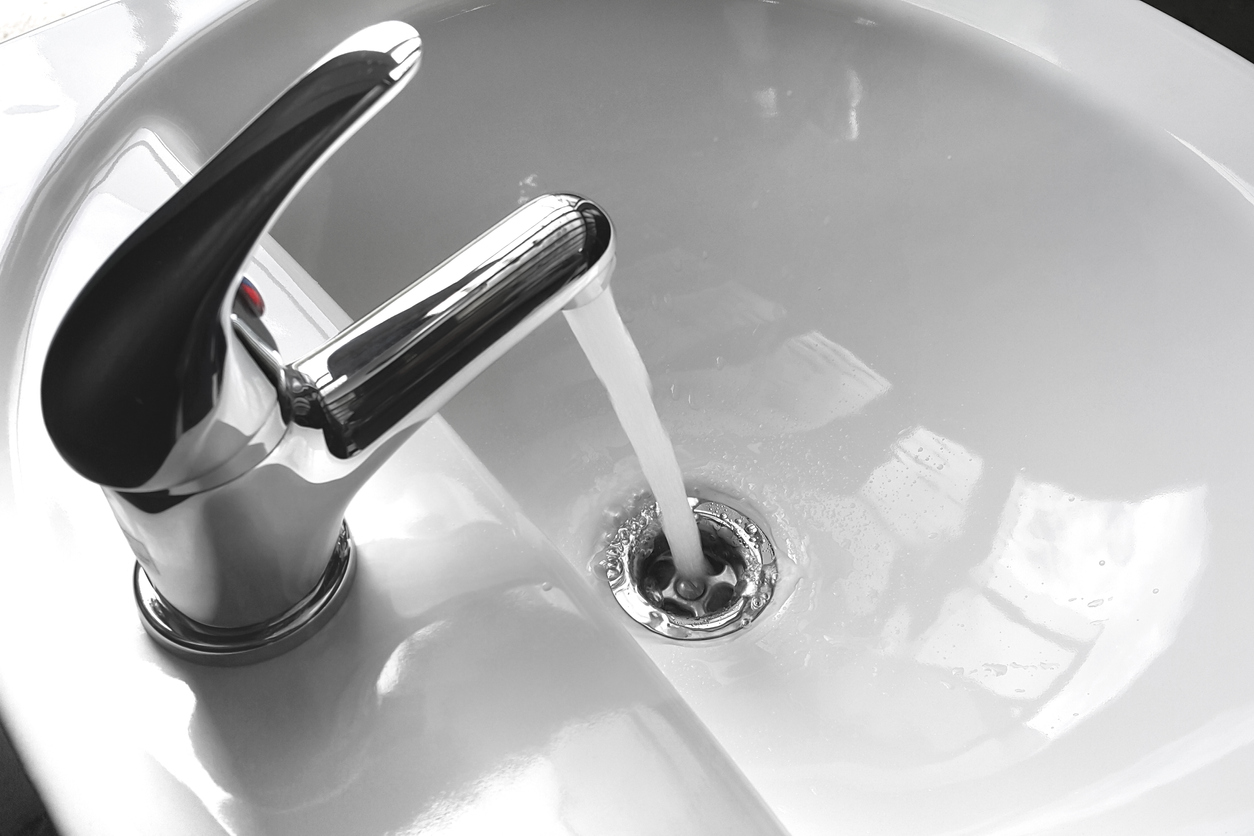Porcelain sinks stay a bright, beautiful fixture in kitchens and bathrooms for years when properly cared for. But without regular cleaning, porcelain will start to show dingy stains, soap scum, hard water marks and other grime that takes away from its lustrous finish.
Learning the most effective methods for cleaning porcelain sinks will help you easily banish buildup and restore a spotless shine. Read on for a complete guide to cleaning and caring for porcelain basins using safe DIY techniques and cleaning products. We’ll cover:
- Why porcelain sinks get grimy and stained
- Daily and weekly cleaning of porcelain basins
- Removing tough stains like rust and mineral deposits
- Special cleaning considerations for vintage porcelain
- Easy polishing for a professional-level shine
- Preventing future stains and damage
- When to call the pros for porcelain cleaning
With the proper cleaning strategy and high-quality cleansing products, you can keep your porcelain sinks looking like new for decades. Let’s get started with why porcelain gets dirty in the first place.
Why Porcelain Sink Basins Get Stained and Grime Builds Up
Porcelain sinks provide durability, but the material is still susceptible to some stubborn grime issues, including:
- Hard water stains – Mineral deposits like limescale from tap water. Dark buildup along the waterline.
- Rust stains – Iron particulates in water causes orange/brown stains. Often around drains.
- Soap scum – Residue from bath products sticks to porcelain. Looks cloudy and streaky.
- Toothpaste globs – Toothpaste splatters dry and stick if not immediately rinsed.
- Bacteria and mold – Can grow in corners, crevices and along the overflow opening.
- Etching – Harsh cleaners actually erode porcelain over time leading to roughness and corrosion.
With routine cleaning and care, you can prevent each of these common porcelain sink problems. Next we’ll go through the steps of daily and weekly sink cleaning.
Daily Porcelain Sink Cleaning
To prevent heavy buildup in your porcelain basins, a quick daily cleaning is ideal. Here’s a simple daily routine:
- Rinse well – At the end of each day, rinse your porcelain sink thoroughly with hot water. This removes most splatters and residual soap/toothpaste.
- Scrub any splatters – Use a soft sponge or microfiber cloth with hot water to gently scrub away any remaining dried bits.
- Disinfect weekly – About once a week, clean your sink with a natural disinfectant cleaner to kill germs. Tea tree oil works well.
- Rinse and wipe dry – Finish by rinsing again with hot water and wiping dry with a lint-free towel to prevent mineral deposits from tap water.
- Open drain stopper – Make sure to open the drain so the sink bowl fully dries between uses.
With just these quick cleaning steps every day or two, you can prevent major grime accumulation in your bathroom and kitchen sinks.
Weekly Deep Cleaning for Porcelain Sinks
In addition to daily cleaning, porcelain sinks should get a thorough scrub about once a week to keep them stain-free. Here’s how:
- Remove belongings – Clear everything out from under and around your sink first. Have good ventilation.
- Clean with hot water – Fill the sink halfway with hot water and add a couple tablespoons of dish soap or mild all-purpose cleaner. Let it soak for 15 minutes.
- Scrub entire surface – Use a soft sponge, nylon scrub pad, or old toothbrush to gently scrub the basin, sides and backsplash. Don’t use abrasive scrubbers or you may damage the finish.
- Clean tough stains – Use a specialized porcelain cleaner to tackle set-in stains. See next section for removing rust, mineral buildup, etc.
- Rinse and dry – Drain the dirty water and rinse several times with hot water. Wipe the basin completely dry with a towel to prevent water spots.
- Disinfect monthly – Every 4 weeks or so, swap your cleaner for an antibacterial product or bleach solution to kill germs.
Repeat these steps each week to prevent grimy, unpleasant buildup. Next we’ll cover removing those tough stains when they do occur.
Removing Stubborn Stains from Porcelain Sinks
Even with regular cleaning, hard water stains, rust spots and mineral scale eventually build up on porcelain. Here are effective approaches for different stains:
- Hard water/limescale – Make a thick paste with baking soda and water. Apply and let sit overnight, then scrub off in the morning. Use white vinegar for mild cases.
- Rust stains – Make a paste with oxalic acid powder and water. Apply to rust spots for 5-10 minutes before scrubbing and rinsing. Wear gloves as oxalic acid is toxic.
- Mildew stains – Use an oxygen bleach cleaner or diluted chlorine bleach. Apply and let sit 10 minutes before scrubbing. Rinse thoroughly.
- Toothpaste globs – Moisten dried paste smears and gently scrape away with a plastic scraper or old credit card. Don’t scratch the porcelain.
- Dingy sink bowls – Fill with a 1:2 solution of hot water and bleach. Let soak 30 minutes, then scrub and rinse. Repeat as needed for severe stains.
- Etch marks – Consult with a professional refinisher, as etch damage cannot be fully removed. Avoid harsh chemical cleaners going forward.
Test stain removers in small hidden areas first to ensure they don’t further damage porcelain. With some persistence, you can restore badly stained sinks.
Special Cleaning Needs for Vintage and Antique Porcelain Sinks
For prized vintage or antique porcelain sinks, take extra care when cleaning:
- Check for existing cracks or damage that cleaning could expand.
- Use only the gentlest cleaners to avoid damaging old finishes.
- Opt for baking soda pastes instead of harsh chemical cleaners.
- Avoid abrasive scrubbers or scrapers that could scratch.
- Test cleaners in hidden spots first.
- Rinse antiques thoroughly since old enamel is softer.
- Wipe dry gently with a soft cloth.
- Restore shine with mineral oil instead of sealants.
- Consult professionals for refinishing if needed.
Preserving the finish of treasured vintage basins requires gentle care and non-damaging cleaning methods.
Safely Brightening and Polishing Porcelain Sinks
To revive a porcelain basin’s beautiful luster after cleaning, try these simple polishing techniques:
- Make a baking soda paste, massage over sink, then rinse.
- Rub a damp cloth dipped in lemon oil over the basin.
- Use a specially formulated porcelain polishing cream. Apply with a soft cloth using circular motions.
- Clean with a whitening toothpaste and rinse thoroughly.
- For antique/vintage sinks, gently polish with mineral oil and a soft rag.
Always provide sufficient protection when working with polishing compounds. Rinse sinks thoroughly after polishing to prevent residue buildup.
Preventing Future Stains and Damage
Cleaning is easier when you proactively prevent issues like hard water stains and rust buildup. Here are some tips:
- Dry sinks after each use to limit mineral deposits.
- Run water briefly before using to avoid splattering straight hard water onto the basin.
- Clean up spills, toothpaste and soap scum quickly before they dry.
- Install water filters that reduce minerals if you have extremely hard water.
- Use rinse aids and wipe dry dishes before putting them in your sink.
- Avoid setting wet sponges and cleaning tools in the sink bowl.
- Add softener to wash water if you regularly hand wash delicate clothing in the basin.
- Use only gentle liquid dish and hand soaps, not coarser varieties.
- Test cleaning products on a hidden spot to ensure they won’t etch or dull the finish.
With extra care taken during use and targeted cleaning afterward, your lovely porcelain sinks will provide beauty and functionality for many years.
Calling in the Experts: Professional Porcelain Sink Cleaning
Periodically, it may make sense to hire professional cleaners to restore badly stained and damaged porcelain sinks. Reasons to call the experts include:
- Severely etched or corroded vintage sinks needing delicate refinishing.
- Heavy rust staining and calcium/limescale buildup not responding fully to DIY efforts.
- Mold or mildew stains in hard-to-reach areas like the overflow drain hole.
- To supplement your own maintenance cleaning for a deeper periodic refresh.
- For busy homeowners lacking the time for intensive basin cleaning and polishing.
Look for a professional cleaning company experienced specifically with porcelain and other delicate surfaces. Ask about their specialized cleaning agents and equipment.
Speed Clean Services offers top-notch professional sink cleaning in the Denver metro region. Their trained technicians have access to industrial-strength cleaners and tools that can restore badly neglected porcelain fixtures beyond what household products can achieve.
Speed Clean Services will assess the extent of staining and etching and select the safest effective cleaning solutions. For vintage and antique basins, they use extremely gentle cleaners and polishing techniques. All products are eco-friendly and safe for your family once the cleaning process is complete.
While a quality porcelain sink should still be regularly maintained with do-it-yourself cleaning, calling in Speed Clean’s experts periodically provides a deeper level of stain removal and shine restoration. They can tackle any porcelain cleaning challenges in kitchens, bathrooms or other living spaces. Many homeowners partner with Speed Clean for an annual professional sink cleaning to supplement their own regular maintenance.
Keep Your Porcelain Sinks Gleaming with Proper Care
Porcelain sink basins bring a timeless elegance to kitchens, bathrooms and more. But their delicate finish requires careful cleaning habits to prevent stains and damage over the years. Follow these do’s and don’ts:
DO:
- Rinse sinks after each use.
- Gently scrub with non-abrasive tools.
- Use mild cleaners designed for porcelain.
- Dry basins thoroughly after cleaning.
- Clean sink overflows and deodorize drains.
- Address stains quickly before they set.
DON’T:
- Let cleaning solutions sit too long before rinsing.
- Use harsh chemical or acidic cleaners.
- Use abrasive brushes or scouring pads.
- Allow wet sponges/rags to sit in the sink bowl.
With routine gentle cleaning and prompt stain removal, your lovely porcelain sinks will maintain their beautiful luster for decades. For an occasional deep clean by seasoned professionals, contact Speed Clean Services. Their expert technicians have an arsenal of effective products and methods to thoroughly restore your sinks’ factory-fresh porcelain shine.




